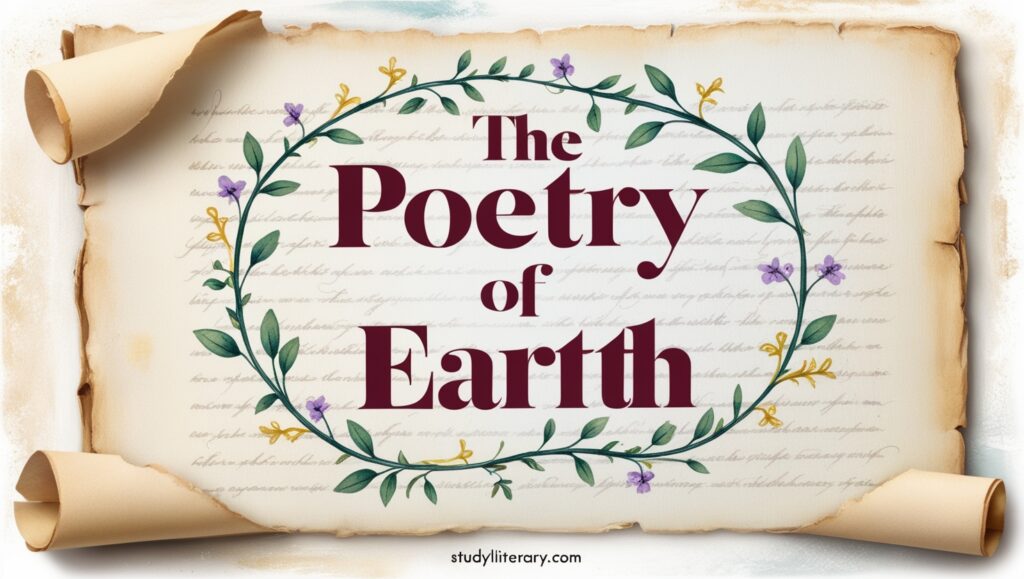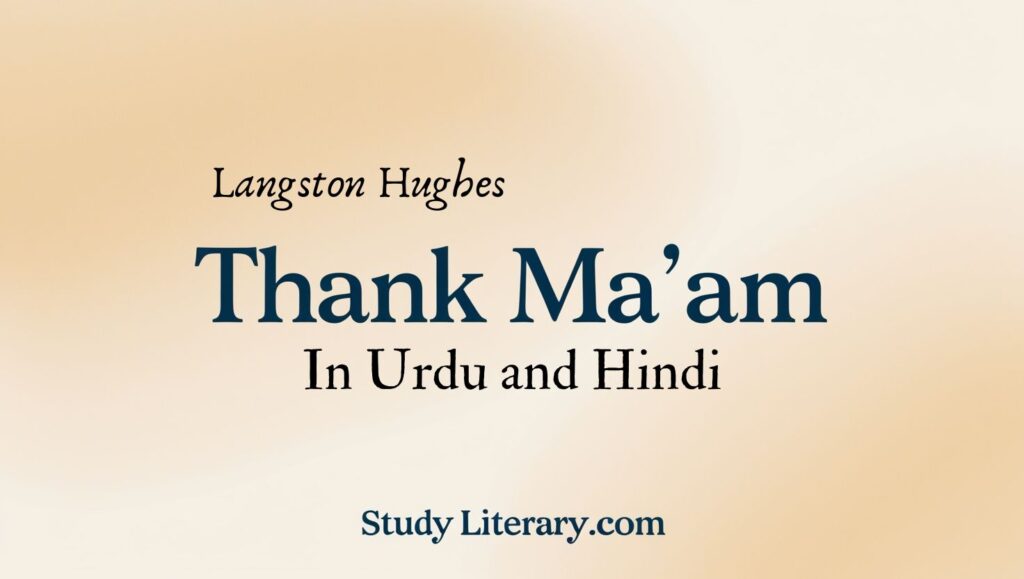Comprehensive Analysis: The Poetry of Earth line by line explanation - Top 1 Explanation for Students

Welcome to our comprehensive guide on “The Poetry of Earth line by line explanation.” This article aims to provide detailed analyses and insights to help students understand and appreciate this beautiful poem. The article “The Poetry of Earth line by line explanation” is particularly for students of 12 class of West Bengal Board, but whether you are in Class 12, or pursuing graduation, or lover of the poetry, you’ll find this guide immensely useful.
Table of Contents
ToggleWhat is ‘The Poetry of Earth’?
“The Poetry of Earth” is a famous poem that highlights the eternal beauty and rhythm of nature. In this section, we’ll delve into the poem’s themes, literary devices, and the poet’s intention. By understanding these elements, you will be better prepared to answer any questions related to the poem.
For more information on poetic devices, check out this comprehensive guide on literary devices.
The Poetry of Earth line by line explanation
To help you thoroughly grasp the poem, we have prepared a “The Poetry of Earth line by line explanation”.
- When: At the time that.
- all the birds: Every bird.
- are faint: Are tired and weak.
- with the hot sun: Because of the intense heat from the sun.
Explanation: When every bird is tired and weak because of the hot sun,
- And hide: And take cover or seek refuge.
- in cooling trees: In the shade of trees where it is cooler.
- a voice will run: A sound will be heard moving around.
Explanation: And they take cover in the cool shade of the trees, a sound will be heard moving around.
- From hedge to hedge: From one bush or boundary to another.
- about the new-mown mead: Around the meadow that has just been mowed.
Explanation: From one bush to another around the freshly cut meadow,
- That is the Grasshopper’s: This sound belongs to the grasshopper.
- he takes the lead: He becomes the main singer or leader.
Explanation: This sound is made by the grasshopper; he becomes the main singer.
- In summer luxury: In the comfort and abundance of summer.
- he has never done: He never stops.
Explanation: In the comfort of summer, he never stops.
- With his delights: With his pleasures and enjoyment.
- for when tired out: Because when he gets exhausted.
- with fun: From all the enjoyment.
Explanation: Enjoying his pleasures; because when he gets exhausted from all the fun,
- He rests at ease: He relaxes comfortably.
- beneath some pleasant weed: Under a nice plant.
Explanation: He relaxes comfortably under a nice plant
- The poetry of earth: The beauty and music of nature.
- is ceasing never: Never stops.
Explanation: The beauty and music of nature never stop.
- On a lone winter evening: On a quiet, solitary evening in winter.
- when the frost: When the cold frost.
Explanation: On a quiet evening in winter, when the frost.
- Has wrought a silence: Has created a stillness or quietness.
- from the stove there shrills: From the stove, a sharp sound is heard.
Explanation: Has made everything quiet, from the stove, a sharp sound is heard.
- The Cricket’s song: The sound made by the cricket.
- in warmth increasing ever: Getting louder in the warmth.
Explanation: The cricket’s song, which gets louder in the warmth.
- And seems to one: And to a person.
- in drowsiness half lost: Who is half asleep and sleepy.
Explanation: And to a person who is half asleep,
- The Grasshopper’s: The sound of the grasshopper.
- among some grassy hills: Among the hills covered in grass.
Explanation: The cricket’s song sounds like the grasshopper’s song from the grassy hills.
Summary
The poem illustrates the continuous and eternal beauty of nature. In summer, when the birds are too tired from the heat to sing, the grasshopper takes over and fills the air with its song. In winter, when everything is silent and cold, the cricket’s song by the stove brings warmth and reminds us of the lively sounds of summer. Nature’s poetry never stops, transitioning seamlessly from one season to another.
Themes
- Eternal Beauty of Nature: The poem celebrates the perpetual beauty of nature, emphasizing that its “poetry” is ever-present and unending. The grasshopper and the cricket symbolize the continuous cycle of natural music throughout the year.
- Harmony and Continuity: Keats highlights the seamless transition between the sounds of summer and winter, suggesting a harmonious continuity in nature. Even when one voice is silent, another takes its place, ensuring that the earth’s poetry never ceases.
- Nature as a Source of Comfort: The poem suggests that nature’s sounds provide comfort and solace. During the bleak winter months, the cricket’s song can remind us of the warmth and vibrancy of summer, offering a sense of hope and continuity.
Literary Devices
Imagery: Keats uses vivid imagery to paint a picture of the natural world. Phrases like “the poetry of earth is never dead” and “he takes the lead in summer luxury” create strong visual and auditory images that bring the scene to life.
Personification: Nature is personified throughout the poem. The grasshopper and cricket are given human-like qualities, such as the grasshopper “taking the lead” and the cricket’s song representing “the poetry of earth.”
Symbolism: The grasshopper and cricket symbolize the enduring beauty and continuity of nature. They represent different seasons but convey the same underlying message of nature’s perpetual poetry.
Contrast: Keats contrasts the sounds of summer and winter to emphasize the unbroken cycle of nature. The lively grasshopper of summer contrasts with the solitary cricket of winter, yet both contribute to the ongoing “poetry of earth.”
Alliteration: Keats employs alliteration to create a musical quality in the poem, enhancing its rhythmic flow. Examples include “the grasshopper’s among some grassy hills” and “from hedge to hedge about the new-mown mead.”
Poet’s Intention
John Keats wrote this poem with the intention of highlighting the timeless and ever-present beauty of nature. He wanted to convey that nature’s music, embodied by the sounds of insects, is always there to be appreciated, regardless of the season. By focusing on the grasshopper and cricket, Keats underscores the idea that nature’s poetry is a constant source of inspiration and comfort. Through this poem, Keats invites readers to find solace and joy in the natural world, even in its simplest forms.
Additional Resource
- View “The Poetry of Earth” previous year question answer.
- Read “The Poetry of Earth” in Urdu/Hindi
- View “The Poetry of Earth” meaning in Urdu/Hindi/Bengali.
We hope this “The Poetry of Earth line by line explanation” guide helps you in your studies. Understanding the depth and nuances of the poem will not only prepare you for exams but also enhance your appreciation for literature. Keep visiting our website, studyliterary.com, for more insightful articles and study guides. Apart form The Poetry of Earth line by line explanation, you may also like the given posts.
The Poetry of Earth Question Answer
2015
Q. Why does Keats feel that the poetry of earth is never dead?
Keats feels that the poetry of earth is never dead because nature is always alive with sounds. In summer, even when birds are too hot to sing, the Grasshopper continues to make music. He enjoys the warm weather and sings from the fields. In winter, when everything is quiet and cold, the Cricket sings from inside the house. This shows that no matter the season, there is always some creature making music. Therefore, nature’s poetry, or music, is always alive and never dies.
The Poetry of Earth in Urdu/Hindi
When all the birds are faint with the hot sun,
Jab har parinda garm dhoop ki wajah se thake aur kamzor hote hai,
And hide in cooling trees, a voice will run
Aur woh darakhton ki thandi chhaaon mein chup jate hain, aik awaaz sunai deti hai jo charo taraf ghoomti hai.
Similar Posts like The Poetry of Earth line by line explanation
Share
- Facebook
- Twitter
- Linkedin
- Whatsapp
- Telegram
- Pinterest


